More about The Tower of Babel
- All
- Info
- Shop
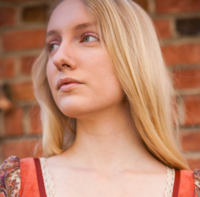
Editor
Hundreds of tiny figures? Check. The Folly of Man as the main theme? Check. Must be a Brueghel.
As a good little Northern European, sixteenth-century humanist, Pieter Brueghel the Elder explored the theme of pride and human folly in many works of art, including Landscape with the Fall of Icarus and The Triumph of Death, so perhaps it’s not surprising that he would choose the Tower of Babel as a subject not once, but at least three times in his career. The story of the Tower of Babel occurs in the book of Genesis, when the world was so new that all the humans on earth still spoke the same language. The humans attempted to challenge God by building an enormous tower whose top would reach heaven to “make a name for themselves.” Threatened by the power of their unity, the Big G was like “oh no you didn’t”, and came down from the heavens and “confounded their speech” so that they might not understand each other, allowing conflict to arise between nations. Thus, the story serves as an explanation for the abundance of languages and war, but also as a warning against that most grave of sins--human pride. It’ll get ya every time.
This is the second and largest version of the Tower of Babel painted by Brueghel, and it is effective at working around the logistical nightmare that painting such a scene presents. Indeed, Brueghel’s friend, cartographer Abraham Ortelius, once claimed that Brueghel “painted many things that could not be painted.” While this can be interpreted in many ways, it may refer to a certain inventiveness Brueghel possessed. Ortelius compared Brueghel to Timanthes, an ancient Greek painter who famously painted a giant cyclops and artfully conveyed his size by placing tiny satyrs nearby measuring the giants’ thumb with their staff. That’s right, sense of scale was once an innovation. And one Brueghel could use well with his ability to paint in microscopic detail. The painting is notable for the thousands of tiny figures engaged in the minutely detailed construction of the colossal tower, all of which construction methods are actually historically accurate, at least for Ancient Rome.
And in fact, Brueghel drew much of his inspiration for this image from a trip to Italy he undertook as a young artist. While most artists went to Italy to study classical nudes, Brueghel characteristically couldn’t have cared less about chiseled abs, and only seems to have been interested in the landscape of the alps, ancient engineering methods, and the ruins of the Colosseum, which he used as the model for his Tower of Babel. Many of the same engineering methods depicted would have been used in Brueghel’s day, just as the ships and barges seen on the lower left would have been used for shipping heavy materials in his own sixteenth century Antwerp. The whole biblical scene seems to be taking place in a large Netherlandish city whose churches and fortresses are overpowered by the enormous tower, perhaps offering a critique of contemporary religious culture….Or perhaps not.
Brueghel liked to keep it enigmatic, and placing biblical stories in a contemporary context was not uncommon in his day. In the bottom right appear the figures of King Nimrod and stonemasons supplicating to him. King Nimrod of Shinar appears nowhere in the original Genesis story about the Tower, but by Brueghel’s time he had become strongly associated with the story as he was a “mighty one in the Earth” and therefore just the sort of little fat-head who would command such a tower to be built. At any rate, it provides just the right amount of narrative detail in a painting that is otherwise just a swarm of human activity in a spiraling tower of scaffolds and sin.
Sources
- King James Bible. Genesis 10-11.
- Russo, William Dello. Bruegel. New York: Prestel Publishing, 2012.
- Rodgers, Nigel. The Bruegels: Lives and Works in 500 Images. London: Anness Publishing Ltd., 2016.
- Gibson, Walter S. Pieter Bruegel and the Art of Laughter. Berkeley: University of California Press, 2006.
Featured Content
Here is what Wikipedia says about The Tower of Babel (Bruegels)
The Tower of Babel was the subject of two surviving paintings and one lost painting by Dutch and Flemish Renaissance painter Pieter Bruegel the Elder. The earliest of the three, a miniature painted on ivory, was completed in 1552–1553 while Bruegel was in Rome, and is now lost. The two surviving works are oil paintings on wood panels, sometimes distinguished by the prefix "Great" and "Little" and by their present location: Kunsthistorisches Museum Wien in Vienna and the latter in the Museum Boijmans Van Beuningen in Rotterdam. The Tower of Babel in Vienna is dated 1563, while the version in Rotterdam is undated but widely believed to have been painted sometime after.
The paintings depict the construction of the Tower of Babel, which, according to the Book of Genesis in the Bible, was built by a unified, monolingual humanity as a mark of their achievement and to prevent their dispersion: "Then they said, 'Come, let us build ourselves a city, and a tower with its top in the heavens, and let us make a name for ourselves; otherwise we shall be scattered abroad upon the face of the whole earth.'" God punishes the builders for their vanity by "confusing their speech" into different languages so that they could no longer communicate; however, in both paintings, Bruegel focuses on the construction of the tower rather than the biblical story as a whole.
The (Little) Tower of Babel in Rotterdam is painted on a canvas of half the width and half the height of The (Great) Tower of Babel in Vienna. The two paintings share the same composition, and modern X-rays reveal that the Tower in Rotterdam initially resembled the one in Vienna even more closely. However, the two paintings differ greatly in specific details, including the architectural style of the towers, the color palette and hues, the progress of the tower's construction, and the human figures in the scene. Most notably, the Vienna version has a group in the foreground, with the main figure presumably Nimrod, who was believed in some Christian traditions to have ordered the construction of the tower.
Bruegel's composition of the Tower of Babel, particularly in the Vienna version, is considered the most famous and widely emulated depiction; both paintings are regarded as among his best works, and are considered exemplars of his characteristically painstaking and "encyclopedic" attention to detail.
Check out the full Wikipedia article about The Tower of Babel (Bruegels)

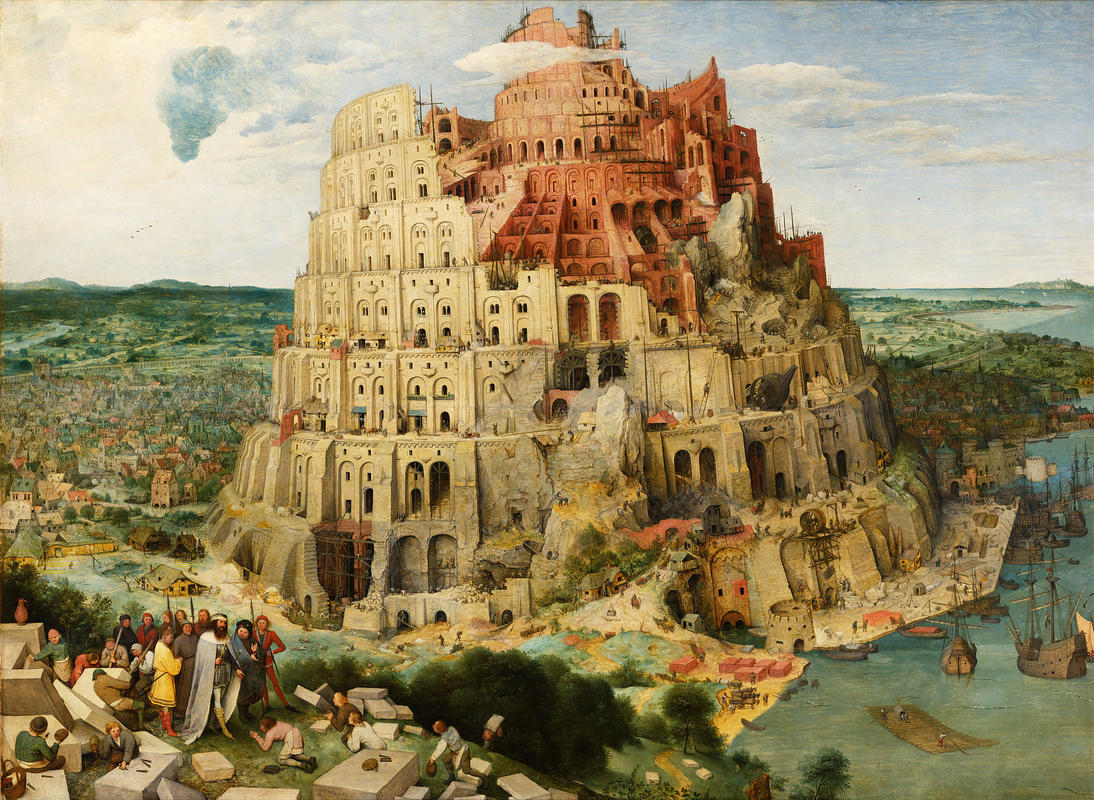
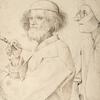
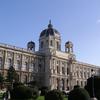

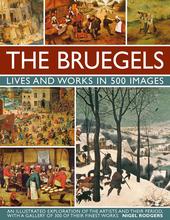
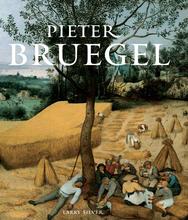









Right away, the image of the tower demands the focus of the viewer, especially because it lies within the central third of the painting. In addition, the dramatic foreshortening in perspective that we can observe when comparing the size of the people in the foreground compared to those working on the tower greatly adds to the perceived size and grandeur of the tower. Depicting the Bible story of the building of the Tower of Babel, we instantly know the context and theme for the painting's content: mankind's foolishness, folly, and pride. This theme is also present in other works done by Brueghel, and so we know that he has experience in being able to convey this theme effectively through his subject matter and in the way he chooses to present it for the viewer.
.
Something peculiar about this painting is the presence of the historical Tower of Babel amidst what seems to be a modern, for Brueghel's time, Netherlandish city. However, this acts to strengthen the theme of the sheer power and grandeur of the tower in comparison to all else. In this contrast, we see how it possibly overpowers the churches and fortresses of the city, displaying the all encompassing nature of what the tower was meant to be in its story: mankind vainly reaching toward god-like autonomy outside the commandments of God to spread out and fill the earth, rather than stay in one spot to glorify their insignificant and foolish mortal power. This one aspect of the painting, the contrast between the tower and the surrounding landscape, and therefore surrounding culture, strikes an accurate chord that can resonate with many things applicable to us in our modern context.
.
Perhaps the towering skyscrapers we build today serve a purpose of worshiping man's growing knowledge of infrastructure with the goal to make things as big as possible. Perhaps the millions of dollars poured into the production of movies serves a purpose to worship man's desire for entertainment. Perhaps the significant strides forward in artificial intelligence technology and automation serves a purpose to worship man's tireless efforts in reaching maximum convenience. Everything that exudes the demand for an all consuming focus creates a god in which all other virtues become insects on the path that man takes toward false perfection. If we ignore that which goes beyond the glorification of man in our human endeavors, if we purposely attempt to pull away from God-ordained purpose, we recreate the Tower of Babel in our mortal folly no matter the specific context.